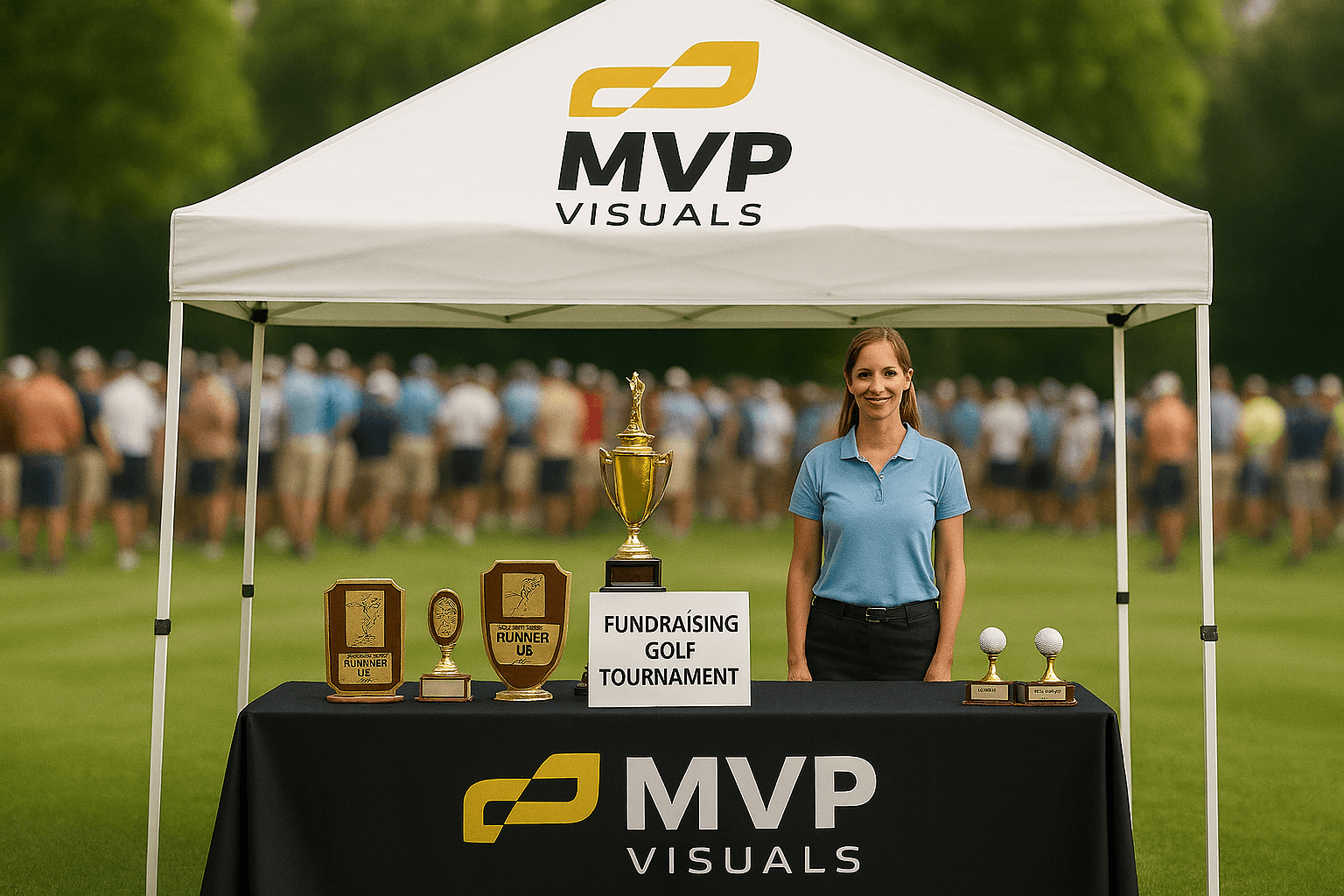You said yes to helping with a golf tournament and suddenly you're managing catering, signage, and 18 holes of chaos.
Most people who plan golf tournaments aren’t professional event planners. They’re volunteers, marketing leads, or board members handed a big job and told to “figure it out.”
That’s why we built this checklist-driven guide for planning golf tournaments: to give you a clear system, so you’re not guessing, rushing, or explaining things last-minute.
Inside, you’ll find the full timeline from one year out to post-event follow-up, broken into simple phases. Every section comes with just enough guidance to move forward, plus a checklist you can act on right now.
Golf Tournament Planning Phases
-
Phase 1 (12 – 9 Months Out) Lay the Foundation: Lock Your Date, Team, and First Dollars
-
Phase 2 (9 – 6 Months Out) Budget and Sponsorship Basics: Set the Numbers That Power Everything
-
Phase 3 (6 – 3 Months Out) Promotion and Player Signups: Fill the Field and Build Visibility
-
Phase 4 (3 – 1 Months Out) Final Details and Fundraising Boosters: Lock the Experience and Maximize Revenue
-
Phase 5 (Week Of) Final Prep and Confirmations: Lock Everything Down Before Event Day
-
Phase 6 (Event Day) Execute Smoothly and Stay Visible
-
Phase 7 (1 to 30 Days After) Wrap-Up and Reset: Thank, Measure, and Plan Forward

Get the Full Checklist
Download our complete checklist to ensure your tournament is a success from start to finish.
Download PDFPhase 1 (12 – 9 Months Out)
Lay the Foundation: Lock Your Date, Team, and First Dollars

This phase sets the tone for everything that follows. You don’t need a full committee or polished materials yet. What you need is structure: a confirmed date, a small team that can move things forward, and a clear reason for running the event in the first place.
Get these in place now, and the rest becomes a lot more manageable. Skip them, and you’ll be playing catch-up the entire way.
- A team with clear roles: Every event needs decision-makers. Start with just three: Event Chair, Sponsorship Lead, and Operations Lead. Keep it lean so things move quickly.
- A measurable goal: Choose one number that defines success: dollars raised, players registered, or leads collected. When that number is clear, decisions get easier.
- A confirmed date: Nothing moves until the course is booked. Call early, ask good questions, and get it on the calendar. The rest will build from there.
Your best sponsors make decisions months in advance. If you wait until your promo materials are ready, you've likely missed your shot. Early outreach counts more than polish.
Phase 2 (9 – 6 Months Out)
Budget and Sponsorship Basics: Set the Numbers That Power Everything

This is where your tournament starts to take shape on paper.
You’ve got a date, a team, and a goal. Now it’s time to get into the numbers: how much the event will cost, how you’ll fund it, and how to price it so you’re not scrambling later. Sponsors are a big part of that equation, and most will make decisions based on timing and clarity, not just design polish.
You don’t need a perfect spreadsheet or a custom pitch deck. What matters is knowing what you’re asking for, why it adds up, and when you need it.
Phase 3 (6 – 3 Months Out)
Promotion and Player Signups: Fill the Field and Build Visibility

With your date, budget, and sponsor tiers in place, now it’s about filling the field.
This phase is often underestimated. Organizers assume players will sign up on their own once the event is live. They don’t. Most events need active outreach, multiple reminders, and a clear incentive to register early, especially if it’s a weekday outing.
This is also when your marketing collateral starts doing real work. You don’t need to be flashy, but you do need to be clear: why this tournament matters, who it supports, and what players can expect on the day.
Phase 4 (3 – 1 Months Out)
Final Details and Fundraising Boosters: Lock the Experience and Maximize Revenue

This is your final planning window. Most of the big decisions should already be made. Now it’s about dialing in the experience and unlocking extra revenue.
Players are signing up. Sponsors are onboard. It’s time to finalize details that affect the flow of the day: signage, contests, food, auction items. You also want to make it easy for people to spend a little more: mulligans, raffles, branded gear, and feel good doing it.
Small upgrades can lead to big gains, especially when they’re visible and well-run.
Phase 5 (Week Of)
Final Prep and Confirmations: Lock Everything Down Before Event Day

This is your last chance to catch small problems before they become day-of issues.
By now, most of the planning should be behind you. This phase is about double-checking the details and getting everyone aligned. No surprises, no guesswork. Confirm vendors, volunteers, signage, and flow. Put everything in writing and follow up.
The more you can answer in advance, the less you’ll need to troubleshoot during the event.
Phase 6 (Event Day)
Execute Smoothly and Stay Visible

This is the day your planning pays off. Your role is to keep the event moving, solve issues quickly, and make sure your sponsors are visible throughout the day.
If you handled prep in Phase 5, most things should already be in place. Use this window to tighten details and stay ahead of small problems before they grow.
Capture what matters. Sponsor signage, branded tents, and player moments are valuable for reporting and promotion later. Document everything with purpose.
Phase 7 (1 to 30 Days After)
Wrap-Up and Reset: Thank, Measure, and Plan Forward

The event is over, but the follow-through matters just as much. This phase closes the loop with your sponsors and players, documents what worked, and lays the groundwork for next year.
Don’t let momentum slip. Deliver on your promises, capture lessons while they’re fresh, and get next year’s version moving while people still care.



